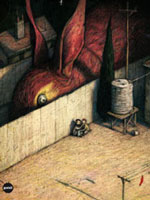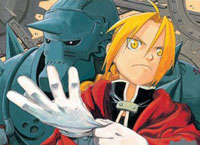 In the years of doing this podcast, we’ve encountered many comics from Japan, but not many about Japan. One in the latter category is “Tonoharu”, about an American teaching English in Japan (an occupation that some of us on this podcast know a bit about!); the second installment of the four-book series was recently released.
In the years of doing this podcast, we’ve encountered many comics from Japan, but not many about Japan. One in the latter category is “Tonoharu”, about an American teaching English in Japan (an occupation that some of us on this podcast know a bit about!); the second installment of the four-book series was recently released.
This week Tim calls up creator Lars Martinson to pick his brain on such questions as, is it jarring for some readers to see a comic about Japan that doesn’t look like manga? What was the inspiration for the style you did choose? And just how long does it take to draw all those lines?! A great discussion ensues.
Lars Martinson blogs on Creating “Tonoharu”
Podcast: Play in new window | Download

 FLASHBACK! In our September 15, 2008, episode, Brandon & Tim review Alex Robinson’s “Too Cool to Be Forgotten” and Lars Martinson’s “Tonoharu pt 1”!
FLASHBACK! In our September 15, 2008, episode, Brandon & Tim review Alex Robinson’s “Too Cool to Be Forgotten” and Lars Martinson’s “Tonoharu pt 1”! The Tokyo Metropolitan Assembly recently passed a law that
The Tokyo Metropolitan Assembly recently passed a law that  L. Frank Baum’s classic children’s story The Wonderful Wizard of Oz was published 109 years ago and still inspires attempts to adapt it to other media. While the 1939 MGM movie tends to define the story in the minds of many, subsequent adaptations do stick closer to the original book than to the movie, including the two we discuss this week: a French version adapted by David Chauvel and Enrique Fernandez (published in English by Image), and Marvel’s recent version, adapted by Eric Shanower and Skottie Young.
L. Frank Baum’s classic children’s story The Wonderful Wizard of Oz was published 109 years ago and still inspires attempts to adapt it to other media. While the 1939 MGM movie tends to define the story in the minds of many, subsequent adaptations do stick closer to the original book than to the movie, including the two we discuss this week: a French version adapted by David Chauvel and Enrique Fernandez (published in English by Image), and Marvel’s recent version, adapted by Eric Shanower and Skottie Young. A bored, punk-dressing god of death and a genius high school boy are the main characters in Death Note, written by Tsugumi Ohba and drawn by Takeshi Obata. The boy, Light Yagami, receives from the god a notebook with which he can kill people simply by writing their names in it. A plot with many twists and turns ensues. Tim and Kumar review — first without spoilers, and then, 38 minutes in, totally and utterly with spoilers.
A bored, punk-dressing god of death and a genius high school boy are the main characters in Death Note, written by Tsugumi Ohba and drawn by Takeshi Obata. The boy, Light Yagami, receives from the god a notebook with which he can kill people simply by writing their names in it. A plot with many twists and turns ensues. Tim and Kumar review — first without spoilers, and then, 38 minutes in, totally and utterly with spoilers. Australia is not world-renowned for its comics scene. But Perth-based
Australia is not world-renowned for its comics scene. But Perth-based  Tim and Mulele are joined by
Tim and Mulele are joined by  Then Tim and Mulele discuss two books by Ken Dahl, “Welcome to the Dahl House” and “Monsters”.
Then Tim and Mulele discuss two books by Ken Dahl, “Welcome to the Dahl House” and “Monsters”.